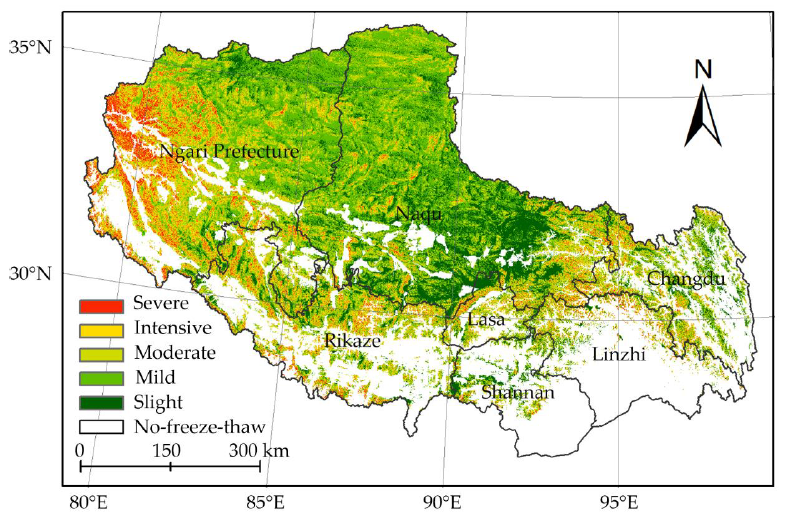Traditionally, studies on freeze–thaw erosion have used the analytic hierarchy process (AHP) to calculate the weight of evaluation factors, however, this method cannot accurately depict the fuzziness and randomness of the problem. To overcome this disadvantage, the present study has proposed an improved AHP method based on the cloud model to evaluate the impact factors in freeze–thaw erosion. To establish an improved evaluation method for freeze–thaw erosion in Tibet, the following six factors were selected: annual temperature range, average annual precipitation, slope, aspect, vegetation coverage, and topographic relief. The traditional AHP and the cloud model were combined to determine the weight of the impact factors, and a consistency check was performed. The comprehensive evaluation index model was used to evaluate the intensity of freeze–thaw erosion in Tibet. The results show that freeze–thaw erosion is extensive, stretching over approximately 66.1% of Tibet. The problem is the most serious in Ngari Prefecture and Nagqu. However, mild erosion and moderate erosion, accounting for 37.1% and 25.0%, respectively, of the total freeze–thaw erosion are the most widely distributed. The evaluation results for the freeze–thaw erosion was confirmed to be consistent with the actual situation. In brief, this study provided a new approach to evaluate the conditions of freeze–thaw erosion quantitively in Tibet.

